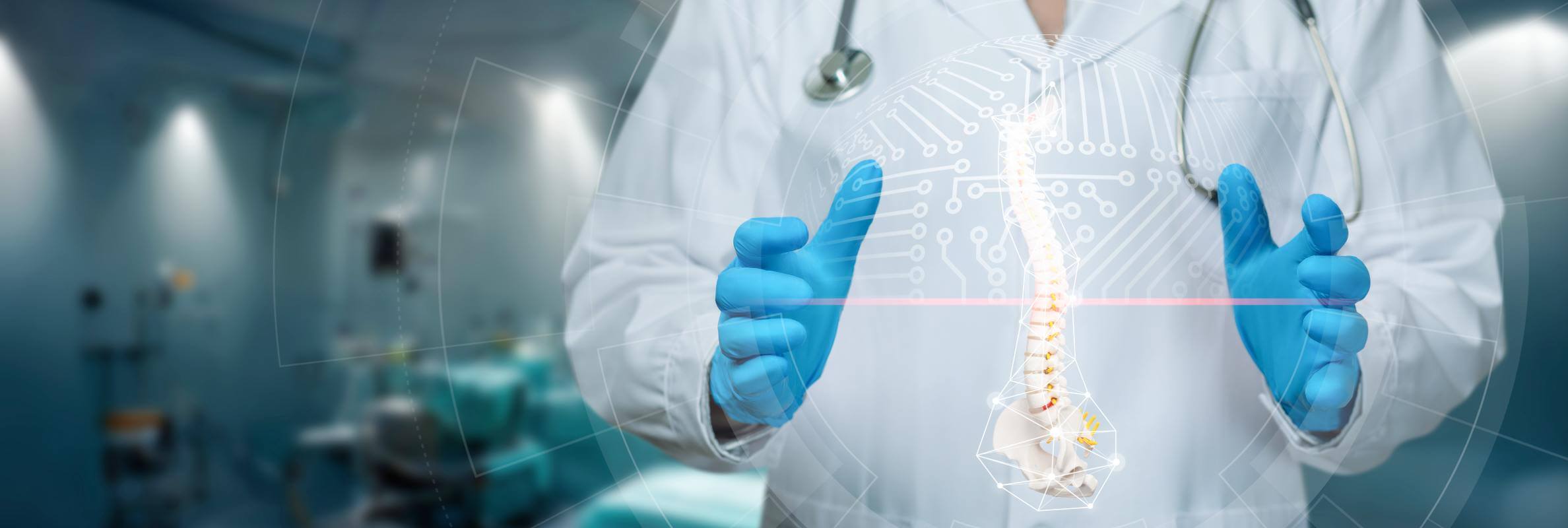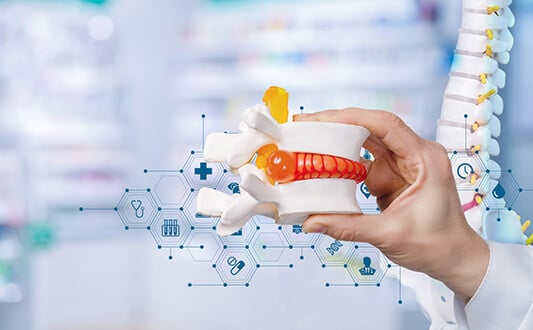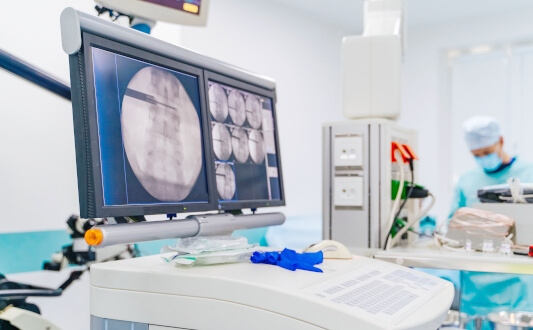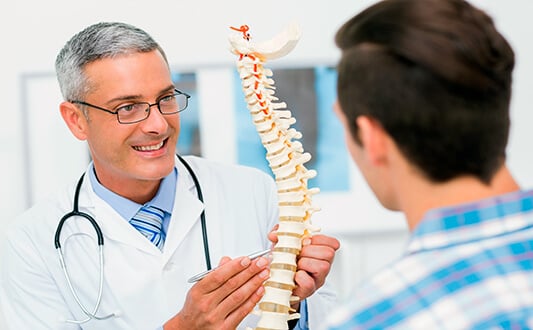Markus Pietrek is a leading physician in the medical team of the Department of Spinal Surgery at the Schoen Clinic Hamburg Eilbek.
With more than 17 years of experience, including work abroad, he applies his expertise to developing the largest Department of Spinal Surgery in Hamburg. It is the only clinic in northern Germany equipped with an intraoperative CT scanner, which ensures the highest precision in spinal surgery to date.
Dr. Markus Pietrek discusses how patients can recognize when spinal surgery is needed, how the surgical approach is chosen, as well as neuronavigation, precision, the challenges of spinal surgery, and future innovations.
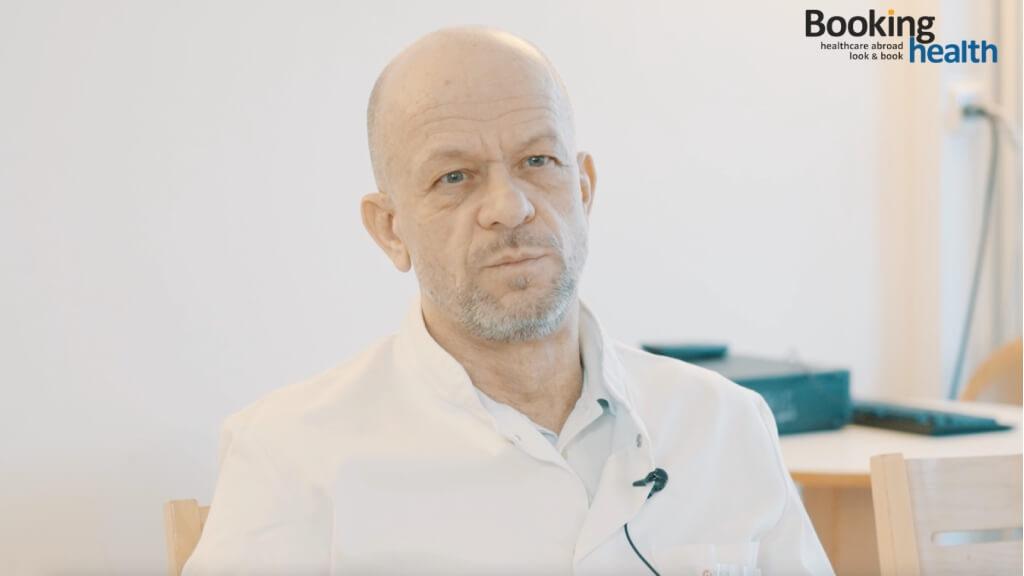
Hello, Dr. Pietrek! Thank you so much for agreeing to this interview. Could you please introduce yourself?
My name is Markus Pietrek. I am a Senior Physician in the Department of Spinal Surgery at the Schoen Clinic Hamburg Eilbek. I have been working here for 17 years and, together with two other colleagues, I am the Head of the Department of Spinal Surgery. Our department is the largest Spinal Surgery Center in Hamburg and treats all spinal disorders.
I would like to tell you a little bit about myself. My primary specialty is orthopedics, and I also have specialized training in spinal surgery. In addition, I am highly skilled in special minimally invasive neurosurgical techniques.
I started my professional career in Hamburg and completed my higher education here. I also worked abroad, first in Switzerland and then in the USA. I lived and worked in New York for three years, lecturing at New York University and several other universities. I then returned to Germany and worked as a Senior Physician in Dortmund for 2.5 years. After the Schoen Clinic Hamburg Eilbek was opened in 2007, I took up the position of spinal surgeon here, and Prof. Papavero and I founded our department at that time. I have been working here ever since.
What are the types of surgical procedures that fall under neurosurgery?
In our department at the Schoen Clinic Hamburg Eilbek, we treat all spinal diseases: lumbosacral pathologies, all types of deformities, degenerative changes, tumors, infectious lesions, and intraspinal pathologies, including tumors. We specialize in the treatment of the full range of spinal disorders, with the exception of pediatric spinal surgery – scoliosis and spinal deformities in children. Adults can undergo treatment of all spinal diseases in our department, ranging from cervical spine pathologies to sacrococcygeal lesions.
What are the symptoms for which a patient may need a surgical procedure?
Of course, it is difficult to answer such a question in two words. It goes without saying that the main cause of concern is pain, especially in the lower and upper extremities. As a rule, patients complain of radiating pain that occurs against the background of compression syndrome. Of course, the presence of such symptoms may be an indication for surgery, but each case should be considered individually.
Severe forms of paralysis, spinal instability, paraplegia, or myelopathies accompanied by slow compression of the spinal cord are absolute indications for surgery. In such cases, surgery is inevitable, just as it is in cases of spinal fractures or infectious spinal lesions.
How do you choose a surgical technique to perform the operation? What factors influence these decisions?
We are fortunate to be able to offer patients all of the existing surgical techniques in the field of spinal surgery. This allows us to solve the patient's problems, taking into account their individual needs.
What surgical techniques do we use? Our specialists perform surgery on the cervical, thoracic, and lumbar spine using dorsal, anterior, and lateral approaches. We always act in the patient's best interest and are guided by the principle "Do no harm", choosing the most sparing surgery possible.
The main profile of our department is minimally invasive surgery, so we strive to use a minimally traumatic surgical approach with minimal time and effort.
Could you please tell us about the latest advances in neurosurgical technology and instrumentation?
The main achievement in modern neurosurgery is the emergence of neuronavigation, which I believe is now the main trend. We are a leader in this field in Germany. Dr. Kothe is one of the specialists who made a great contribution to the introduction of neuronavigation in Germany. We have been using neuronavigation in our practice for many years, and we are the only clinic in northern Germany that is equipped with an intraoperative CT scanner. The combination of intraoperative CT scanning and neuronavigation allows our surgeons to implant screw systems with millimeter accuracy. This is of crucial importance when performing operations on the cervical spine, where every millimeter is important and the surgeon has no margin for error. Neuronavigation is therefore one of the key components of our work.
Robotic technology is not that relevant yet. This technology plays a certain role only in the placement of screw systems, so it is not in high demand yet and remains a question of the distant future. I believe that the main trends in neurosurgery today include neuronavigation and the introduction of minimally invasive surgical techniques. It is worth noting that all of this is available in our department. We perform a variety of microsurgical and minimally invasive surgical procedures. We also offer patients endoscopic surgery for intervertebral disc pathologies.
How important is the use of imaging techniques in neurosurgery?
Imaging methods play an important role when performing operations for cervical spine pathologies through a dorsal approach, as well as operations on the upper thoracic, lumbar, and sacrococcygeal spine. It is extremely important to ensure that the screws in these areas are implanted as accurately as possible, so there is little or no chance for error.
We have a specially designed operating room at our disposal. It is much larger than a standard operating room because a special CT imaging unit is integrated into it and separated by a screen. The patient is placed in the desired position on a special carbon table, after which the surgeons complete the preparation for the operation. Next, a CT scan is done right in the operating room, and the real-time CT scans are read by a neuronavigation device. The patient is connected to the neuronavigation system with a special connector, which allows tracking the localization of surgical instruments with millimeter accuracy during the surgical procedure without the use of X-ray equipment. All surgical instruments in the operating room are calibrated in accordance with the neuronavigation system used, so that we can implant the screw systems with pinpoint accuracy. This ensures the highest level of safety for the patient, even when the surgical intervention is performed on vital areas of the spine.
How have advanced technologies affected postoperative recovery and its duration?
Of course, the smaller the incision and the more sparing the surgical technique, the faster the patient's mobility is restored and the less pain he or she experiences. In our department, the verticalization of patients begins immediately after each surgery at a suitable time of day and in the absence of severe pain syndrome. In general, every patient operated on in our department can independently stand on their feet or move after the termination of anesthesia. There are no restrictions in this regard. We also do not prescribe patients to wear orthoses and corsets after surgery. Surgeons in our department do not use postoperative restrictions, such as the prohibition of sitting and the like. On the contrary, patients get back on their feet as quickly as possible. In our department, we welcome the speedy and full restoration of mobility.
What difficulties arise during neurosurgical treatment and how are they resolved?
Our department treats spinal disorders of any severity. Our clinic is considered to be one of the leading in the country, one might even say the best in the treatment of cervical spine pathologies. Patients come to us not only from all over Germany but also from Europe. We have many years of experience in this field.
All clinical cases are discussed during a daily consilium with the participation of many specialists. Therefore, the decision to operate is not made by a single person. We always have the opportunity to discuss the clinical case collectively and make the best possible decision. When planning complex operations, two or three experienced surgeons are involved, and they subsequently perform the surgery together.
We offer patients a wide variety of surgical procedures, ranging from simple minor surgeries to extremely complex operations that are not performed in every hospital in Germany.
Like all of my colleague surgeons, I do consultations once a week. I see patients from morning to evening, and the other four working days I am always in the operating room.
What is the process of postoperative recovery after a neurosurgical procedure?
Of course, postoperative recovery after minor or standard surgeries, interventions for intervertebral disc pathologies, spinal stenosis surgeries, or uncomplicated cervical spine surgeries is quite simple. The patients immediately get back on their feet and restore their mobility. Physiotherapy is already carried out on the day of surgery and the following two days. The patient is then discharged, and an outpatient course of physiotherapy lasting several weeks is usually sufficient in such cases.
Our clinic has a specialized Physiotherapy Training Center with the latest equipment and experienced specialists, where patients recover in the first days or weeks after surgery.
The patient does not need rehabilitation after the above-mentioned minor surgical procedures. If the patient has undergone major surgery, rehabilitation is possible, but not mandatory. Even after complex spinal surgeries, a course of rehabilitation is not always prescribed. If necessary, rehabilitation can be carried out in cooperation with specialized partner clinics. Elderly patients can undergo rehabilitation at our clinic, while young people are referred to partner rehabilitation clinics.
When rehabilitation is really indispensable, it is with the development of severe paralysis or paraplegia. In such cases, a special course of neurorehabilitation is recommended.
How do you see the future of neurosurgery? What changes do you think will occur in this field?
I don't think there will be any revolutionary changes in the near future. There will certainly be work on improving minimally invasive and endoscopic techniques to further reduce the trauma rate of spine surgery. This direction is becoming increasingly important now.
As I already said, neuronavigation will become an indispensable tool for spinal surgeons in the future. Clinics will increasingly begin to incorporate this technology into their practice, which will make spinal surgery technically easier. I believe that this technology is the future. I have no doubt that imaging methods will be improved significantly and it will be possible to use an MRI scanner directly during surgery. This direction is also relevant now.
Artificial intelligence will certainly play a role in the field of medical imaging. I think the possibilities in this area are almost endless.
Dear Dr. Pietrek, thank you for the informative interview!
Don't know where to start?
Contact Booking Health